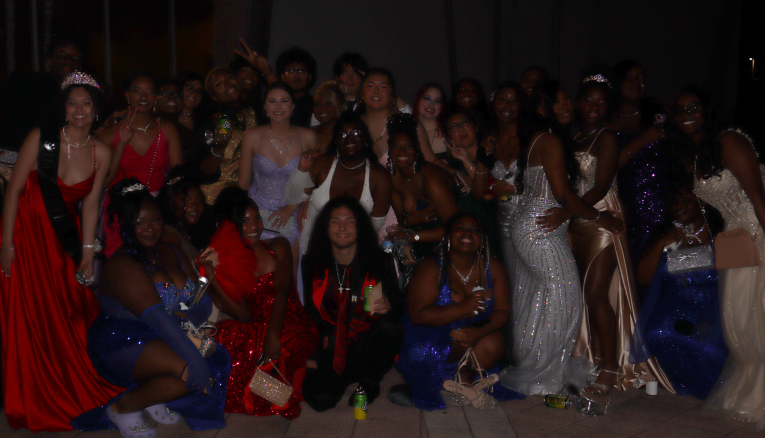The release of Jeanine Cummins’ novel, American Dirt, has prompted a nationwide controversy. The book is about a Mexican mother and her son fleeing to America after their family members were killed by a drug cartel.
Despite the important issues the book focuses on, the criticism is centered on how a white, non-immigrant person could write an entire novel about the struggles of crossing the border without having any experience. Although Cummins’ grandmother is Puerto Rican, readers are calling her out on charges of racial and cultural appropriation for attempting to imitate the migrant experience.
Jeanine Cummins agreed she did not believe she had the capability of writing a story regarding the life of an immigrant knowing she was not one herself. “I was worried that, as a nonimmigrant and non-Mexican, I had no business writing a book set almost entirely in Mexico, set entirely among immigrants. I wished someone slightly browner than me would write it,” stated Cummins.
Senior Karla Fabian is just one of the thousands of Latinos criticizing Cummins’ work. “I moved to America from El Salvador when I was four years old. Honestly, this was a great advantage to me because I was able to learn the language within the span of six months, however, the culture is not something that I learned, its something I had to live through to understand. My story is my own. It’s special to me and no one will truly know the details besides myself. Immigration isn’t a normal story everyone can relate to. Cummins isn’t able to have that connection since she has not gone through the same traumatic experience as immigrants have, so what gives her the right to write an entire book about immigration? Truth is, she doesn’t have that right even with ‘research’ that doesn’t come from a primary source. Cummins has written the novel based on her imagination of what forced migration to another country looks like.”
Not only does Cummins’ book lack authenticity towards immigration, but it also includes stereotypical lifestyles and appearances of Mexicans.
Born in Mexico, senior Martha Gaytan has also spoken out about her feelings towards the inauthentic characters created by Cummins, and the lack of knowledge they represent. Gaytan stated, “Jeanine Cummins wrote American Dirt in an act of good faith. I believe that Cummins wanted to shed a light on an unspoken topic the best way she knew how, however, it was a poorly executed attempt to do so and utterly tone-deaf about the actual struggles of Mexican immigrants. The two main characters are not even a remote representation of them.”
“Lydia’s situation is not accurate due to the fact that many immigrant Mexican women flee because they’re escaping poverty and abusive husbands, not a love triangle with the leader of a drug cartel. Her sense of duty to speak on this topic despite her complete lack of knowledge and experience as a Mexican immigrant screams white privilege,” expressed Gaytan.
Gaytan similarly addressed the unrealistic portrayal of Mexico, a country she loves and visits. “Lydia, the immigrant mother, is a well-educated and successful owner of a bookshop whose world has been flipped after the killing of an entire family, which she states was ignored by national news. This in itself shows that Cummins demonizes Mexico by depicting it as a devilish country with no justice in order to entice readers to root her escape to the United States. It is a stereotype that countries, such as Mexico, are riddled with savagery and violence everywhere. There are various peaceful parts of Mexico and a sophisticated population despite Cummins portrayal.”
The front cover of a book is what captures a reader’s attention from the start. As for American Dirt, its front cover seems to have been beautifully designed with traditional Mexican tiles, but when taking a closer look, readers can also notice the barbed wire. For many, barbed wire is seen as a symbol of oppression and denial of freedom. Not only does it represent exclusion, but the barbed wire at the actual Mexico-United States border is also lethal and used to inflict pain.
Many Latinos and people of color are condemning the book and questioning why other Latino authors who write about the same topic, do not receive the same praise and recognition as Cummins has. After being on the market for a little over two weeks, the novel has been awarded a seven-year book advance, selected for a possible movie adaptation, and has become an Oprah Book Club selection. She was even paid $1 million in advance for the novel.
As thousands of individuals questioned why Cummins’ book has been glorified among society, according to Lee & Low Book, about 80 percent of book publishers and agencies are white. Only 6 percent of Latinos make up the entire industry and 3 percent comprise the industry’s leadership. These statistics suggest how unrepresented Latinos are in the world of literature and why other Latino writers who write their own stories of immigration do not obtain the same opportunities as Cummins.
As a result of the backlash Cummins’ received for her novel, threats have been made to the booksellers and Cummins’ herself. This caused her promotional book tour to be canceled because of their safety concerns. In response to this, activist, actress, and businesswoman Eva Longoria spoke out on her concerns about the book tour cancellation. “What made me really upset was when the publisher said, ‘We had to cancel the book tour because of safety concerns,’ which made my community look like we’re crazy people going to cause trouble. We’re not. We’re just being outspoken about the inaccuracies of what this book represents.”
Defending Cummins and her work, Washington Post book critic Ron Charles mentioned, “Listening to the anger directed at Cummins for having only one Latina grandparent, I suppose future novelists will have to submit their manuscripts along with a 23andMe genetic profile.” Although the novel’s controversy seems to have been impacting its sales, for the week of January 26, it reached the top-selling fiction book on Amazon and the top of the Times’ best-seller list.
After its release, Cummins spoke out on the research she conducted to make her book as authentic as she could have written it. Cummins responded, “I did five years of research. I went to the border. I went to Mexico. I traveled throughout the borderlands. I visited Casa del Migrante in Mexico. I visited orphanages. I volunteered at a desayunador, which is like a soup kitchen for migrants. I met with the people who have devoted their lives on the front line to the work of protecting vulnerable people. … And despite the fact that it has grown into this crazy moment that I never anticipated and that feels as if I’m in the eye of the hurricane, I know for a fact that this book is moving people”
From reading the sample pages of the novel provided by Entertainment Weekly, as a Latina myself, I can see why so many people criticize the story from the start. Just from its introduction, Cummins writes the story with all the characters celebrating Yénifer’s quinceañera. She writes Yénifer to be dressed in a traditional white gown. Years ago, it was a custom to wear white for the celebration, but in this day in age, there are millions of girls who break this rule and wear the color they believe best represents them.
Additionally, Cummins describes the little boys at the party as wearing their Hernández jerseys while playing soccer as the grandpa cooks carne asada and listening to Banda MS. This entire scene depicts Cummins’ stereotypical mindset because it conveys the cliché Mexican party with the sport that most people categorize them with. Even the music is a stereotype because not all Mexicans prefer Banda, everyone’s preferences are different. Other musical genres Cummins could have included instead of the typical Banda consist of Mariachi, Ranchera, Corrido, Cumbia, Bachata, and Merengue.
Overall, as much as Cummins wanted to advocate for immigrants through her story, I believe those who have lived the immigrant experience could have written the story in a better, more accurate way.
















